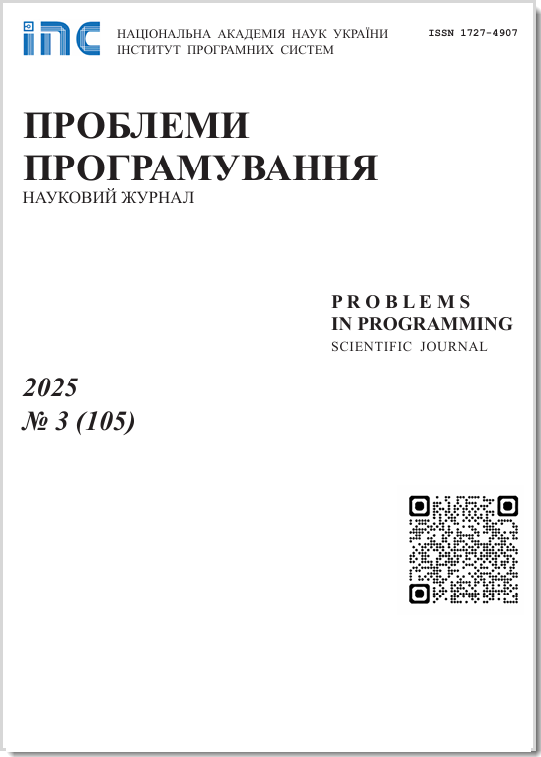Description of the web service process. Tabular interpretation
Abstract
Solving the tasks of web services at the process level is an actual problem for many years. This research is based on the previous ones, where the functional model of the web service and its tasks of this level are formalized by ontologies built on the basis of the descriptive logics. But the functional model is static and does not consider the behavior aspects of the web service. For a formalization of web service behavior, the descriptive logic should be extended by temporal operators. This is the focus of the research.
To interpret temporal operators a tabular representation is used. This study extends the tabular interpretation of future temporal operators for LTL ACT previously described. It uses this approach to determine the tabular representation of LTL ACT past tense operators. This paper gives an example of applying the tabular interpretation of LTL ACT to describe the dynamics of a specific application process, namely, the model of the administration of the process of submitting a dissertation for the degree of Doctor of Philosophy.
It should be noted that the research presented in the article has certain limitations, because it covers only linear time and does not support branching in time. That is, it does not provide the possibility of formalizing an arbitrary process. The tabular interpretation of temporal operators of non-linear time is the direction of further researches.
Prombles in programming 2024; 4: 99-113
Keywords
Full Text:
PDF (Українська)References
Web Service composition: Semantic Links based approach. Freddy L'ecu', Doctor of Philosophy, 2008.
Hobbs, J.R., Pan, F.: An ontology of time for the semantic web. ACM Trans. Asian Lang. Inf. Process. 3(1) (2004) 66-85. CrossRef
Zakharova O. Descriptive logic using in Web-service problems. Problems in programming. 2015. N 1. С. 38-50.
Gutiérrez-Basulto, V., Klarman, S.: Towards a unifying approach to representing and querying temporal data in description logics. In: Krötzsch, M., Straccia, U. (eds.) RR 2012. LNCS, vol. 7497, pp. 90-105. Springer, Heidelberg (2012). CrossRef
Montanari, A., Chomicki, J.: Time domain. In: Encyclopedia of Database Systems. (2009) 3103-3107. CrossRef
Carsten Lutz, Frank Wolter, and Michael Zakharyaschev. Temporal description logics: A survey. In 15th International Symposium on Temporal Representation and Reasoning, 2008. IEEE Computer Society Press, P. 3-14. CrossRef
Reznichenko V., Chystiakova I. Table interpretation of the temporal description logic LTLALC Prombles in programming 2022; 3-4: 216-230.
Zakharova O. Defining and resolving Web-services discovery problems using description logics formalism. Problems in programming. 2017. N 4. P. 66-78.
Schlingloff H., Martens A., Schmidt K. Modeling and Model Checking Web Services. Electronic Notes in Theoretical Computer Science. (2005) V. 126. P. 3-26. CrossRef
DOI: https://doi.org/10.15407/pp2024.04.099
Refbacks
- There are currently no refbacks.









